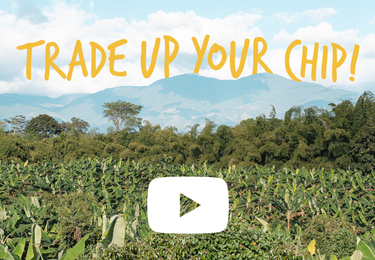Our products are proudly made in Colombia—a beautiful country rich in biodiversity. Out of the twelve countries in South America, Colombia is the only one with both Pacific and Atlantic coasts. It’s also the second most biodiverse country in the entire world, the first being Brazil, which is approximately seven times larger than Colombia. Biodiversity is determined by the variety of life found in one place. Colombia is home to many different ecosystems—314, to be exact—spread throughout its six main regions: Caribbean, Western Andes, Pacific, Eastern Andes, Massif, and Amazon-Orinoco. We are going to focus on the Western Andean region, which is made up of four departamentos—this is the equivalent to states in the U.S.—Caldas, Antioquia, Risaralda, and Quindío. That last one might sound familiar. This region is more commonly referred to as the coffee region; in Spanish: el eje cafetero.

Armenia is the capital of Quindío, and this is where you would go to find our farm where we grow and harvest our plantain and cassava; as well as our production plant where the crops are transformed into strips and packaged in the bags that end up in your hands.
Visiting Armenia never gets old. I don’t tire of the scenery (I don’t know anyone who does), and it remains my favorite landscape to behold. But how to capture the feeling the coffee region emanates?
In the same way that you might be lulled to sleep by the ocean’s waves—perhaps overwhelmed by its vastness—you instantly feel the magic of Quindío pull you into a trance. The sea of green tugging at your fingertips, begging you to reach outward and swallow the whole world in one breath. Because with every inhale, you feel it in your bones, as your heart finds a steadier rhythm. This is where Colombia’s most important crops grow, and it’s where you feel most in touch with Mother Earth. You can hear her breathing, with every bird chirping, every raindrop trickling down leaves so green you might mistake them for emeralds—just as vibrant, just as precious.
Say you were to visit Colombia, and I have successfully convinced you that the coffee region is a must, what would you see besides an abundance of green? How would you pack accordingly? What would you learn?
Here’s a mini guide for your trip to Quindío!
Quindío’s Climate:
You might have already guessed that Quindío has a tropical climate. This is exactly why the region is perfect for growing tropical crops (such as coffee, plantain, cassava, etc.) and why we chose to make this part of our identity with our name, Artisan Tropic, and our palm tree logo.
Tropical typically equals rain—lots and lots of rain. With rain comes humidity, as well as clouds and fog. Of course, this rain is incredibly necessary, and it’s why the region is so green and full of life. Temperatures vary per year, but on average they range from 60°F to 80°F. Keep this in mind when packing your suitcase!
The Key Sights and Must-Do’s:

There are many small towns surrounding Armenia that will be sure to charm you with their quaintness. The most popular by far is Salento. Here you can have a typical Colombian pueblo experience—a plaza by the town’s church, coffee sweetened with panela sold on carts, colorful buildings with terracotta roofs, and artisans posted up at their shops. This kind of town is what inspired the creators of Disney’s animated film, Encanto.

The image of the Encanto house above depicts hilly terrain with curiously tall palm trees; this a direct call-out to el valle del cocora. The Cocora Valley is probably what makes Salento so popular. Here you will find a lush valley sprinkled with the tallest recorded palm trees in the world. The Quindío wax palm is Colombia’s national tree, and this valley is the main location where they can be found, one that is protected by the Colombian government. Encanto means enchantment, so there’s no wondering as to why the movie’s setting was influenced by the Cocora Valley. A magical sight if there ever was one.

You can’t visit the coffee region without going on a coffee tour, of course. Colombia is the third largest producer of coffee in the world, and it’s arguably the best in terms of taste and quality, according to coffee connoisseurs. Not only will you get the experience of trying the best coffee you have ever tasted, but you will get an in-depth look at how one of the world’s most consumed crops is grown and harvested.

Feeling adventurous? You can do all sorts of outdoor activities such as paragliding and ziplining at aerial adventure parks!

Lastly, if you do plan on going to Quindío, let us know! We would love to see if we can coordinate and give you a tour of our farm and production plant.

Pictures won’t ever fully capture Colombia’s coffee region. El Quindío awaits you. If you close your eyes and listen carefully, you can hear the flora and fauna exude their existence, calling out, casting their spell.
Image 2: Photo by Alejandro Ortiz on Unsplash
Image 3: Disney
Image 4: Photo by Alejandro Ortiz on Unsplash
Image 5: Uncover Colombia
Image 6: Tripadvisor, Quindio Aventurero




